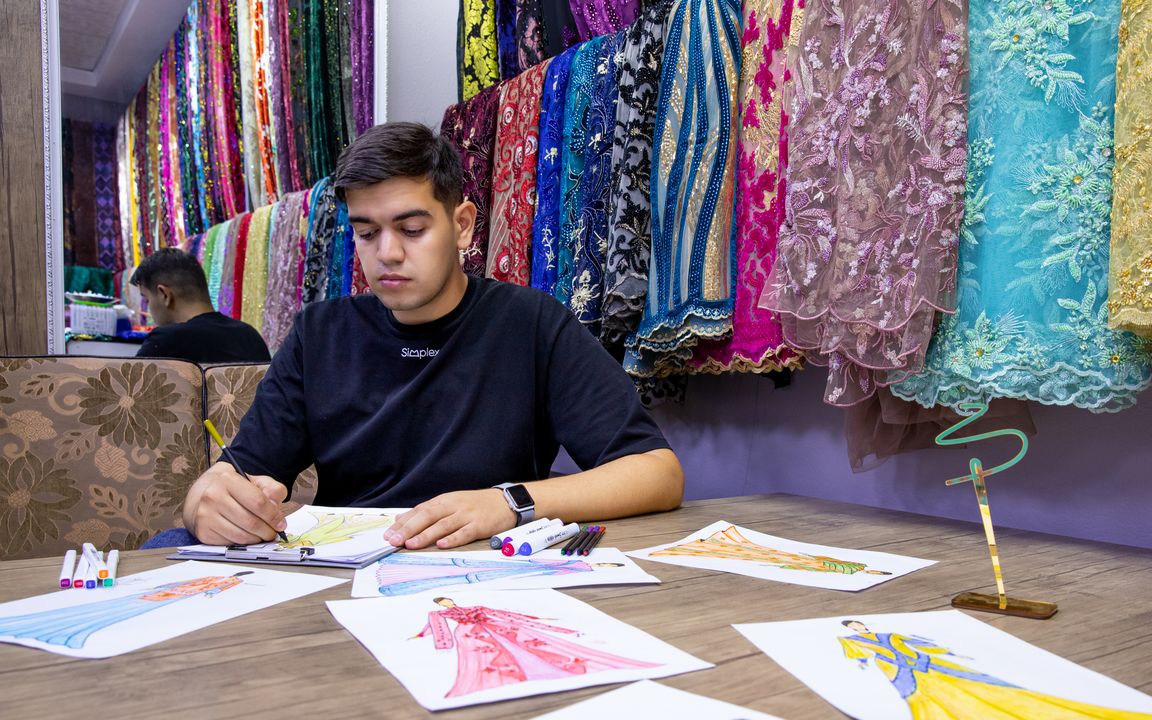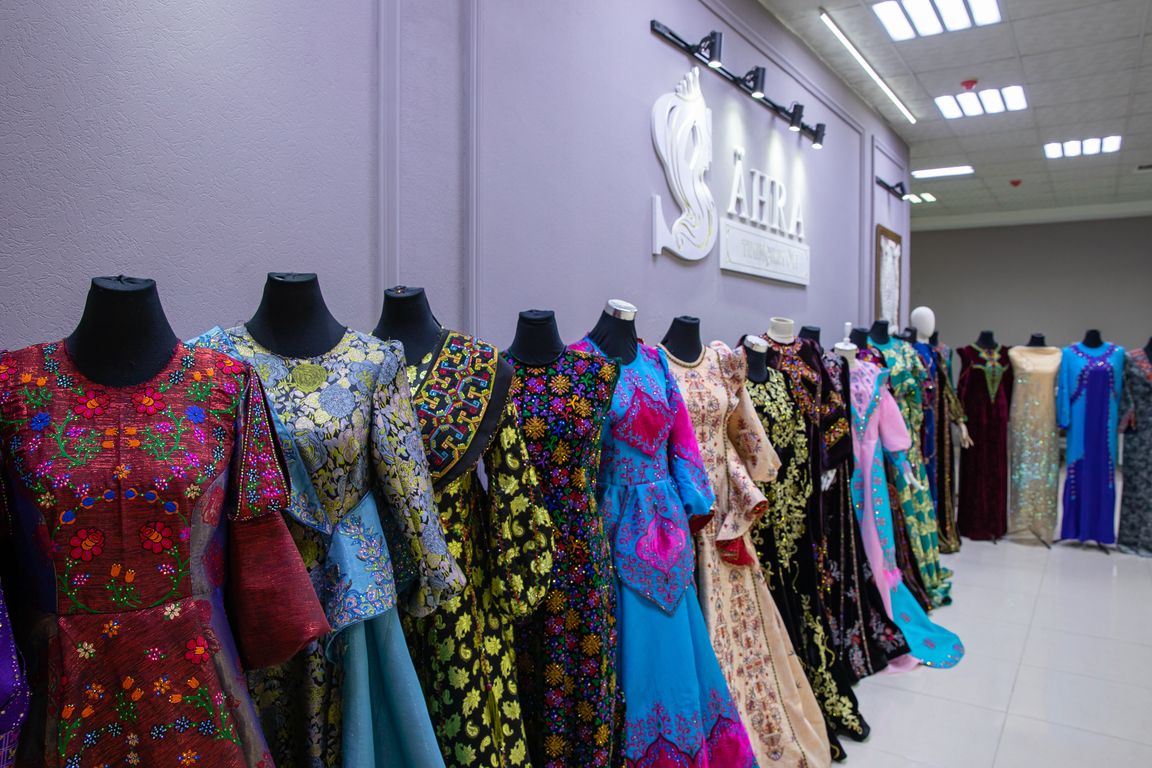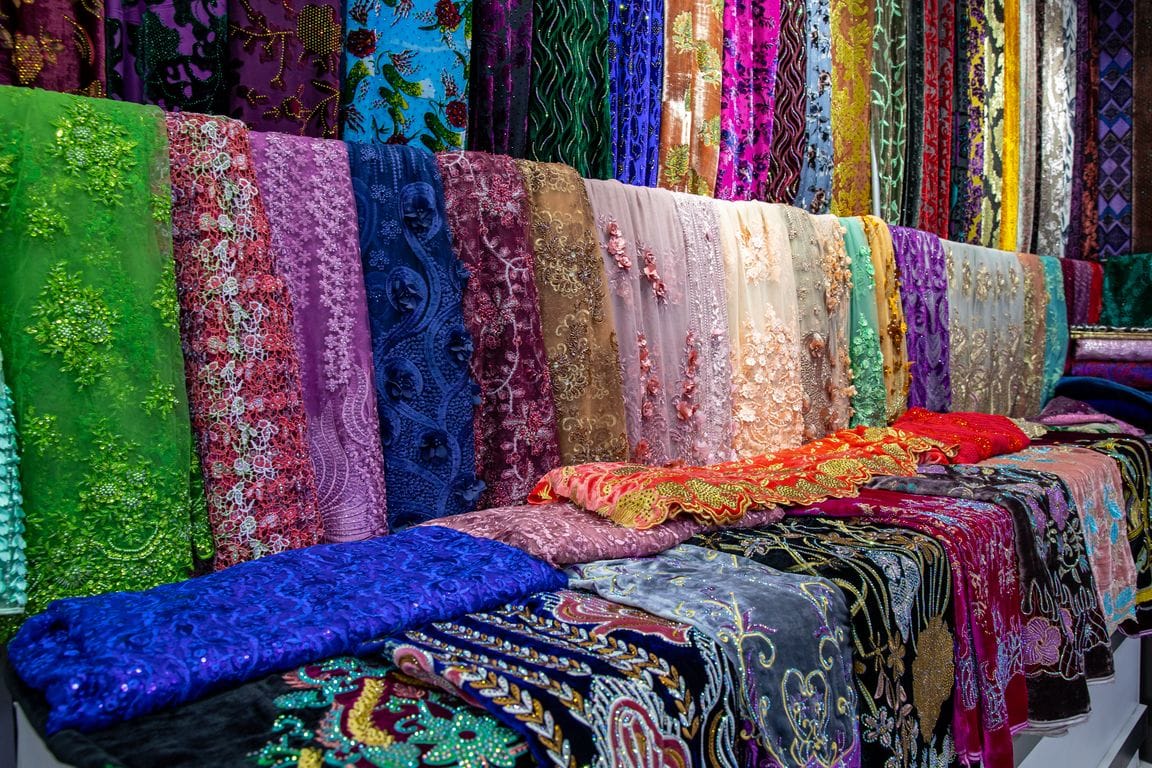Velvet has long been considered a symbol of luxury and high position. Both in Europe and in the East, it was worn by kings, emperors, representatives of the nobility. With the development of the textile industry, velvet has become more affordable, but even today it is considered one of the most elegant and expensive fabrics.
The birthplace of velvet is ancient China. The first mention of it dates back to the 3rd century BC. It came to Byzantium (modern Türkiye) around the XIX century, and from there it spread throughout Europe. In the XVII century, the production of velvet was launched in Russia.
In Turkmenistan, besides velvet, panne velvet is very popular. Many people often confuse these two names, calling ordinary velvet panne velvet. In fact, with some external similarity and a similar manufacturing method, there is a difference between them. Representatives of the Ashgabat atelier Sähra, which creates exclusive outfits from both types of fabric, spoke about the similarities and differences between velvet and panne velvet.

Velvet is a dense, heavy fabric, on the same dense, most often on a cotton, less often on a silk or woolen basis (modern velvet is increasingly woven from synthetic threads). It is plain and matte, and its pile is located vertically.
Modern velvet is made by weaving five threads, of which four form the warp, and the fifth - the pile. Real classic velvet does not stretch or shrink, retains heat well.
Most often, evening dresses, stage costumes, theater curtains and drapes are sewn from velvet. This fabric even outwardly looks heavy and solid.
Panne velvet is much lighter and softer, since its base is thinner than velvet. Its pile is always inclined and therefore more glossy. Panne velvet, as a rule, has a patterned surface.
Patterns can be pressed onto the fabric with a special press - the villi are simply pressed against the base at different angles and thus create an ornament. Or a pattern on panne velvet is created on a chiffon basis, when against the background of thin fabric the pile forms a wide variety of patterns, most often floral. There are also types of panne velvet with colored patterns - both on a chiffon basis and with a uniform surface.
Because of its softness, panne velvet drapes better. Thin and yet voluminous thanks to the pile, it forms elegant folds, and the slanted pile creates a beautiful play of play in bright light. Some modern types of panne velvet have the ability to stretch across or in both directions.
Modern velvet and panne velvet are made from both 100% polyester and blended fibers consisting of viscose, silk, acetate and even wool.
Velvet and panne velvet, in addition to advantages, have some disadvantages. This is primarily the ability to attract dust, villi and animal hair. In addition, synthetic velvet and panne velvet can accumulate static electricity. When cutting, such a fabric “crumbles”.
Both types of fabric require only delicate washing in water not hotter than 30 degrees, they cannot stand machine spinning, they should be dried on “hangers” or on a towel, and not on a rope. Also, they can not be ironed - only vertical steaming is suitable. You can also store them only in a hanging form, when folded on the pile, ugly creases are formed, which even by steaming can not always be removed.

In the Sähra atelier, you can not only order a unique outfit made of velvet and panne velvet, but also purchase any of these types of fabrics. The assortment includes velvet, panne velvet on chiffon and plain, plain and with patterns. Atelier consultants, based on their rich experience in working with similar fabrics, are always ready to explain which fabric is better to choose for a particular outfit. After buying the fabric, you can order a dress or suit right in the atelier itself.
Sähra shop-studio is located at the address: Ashgabat, st. Gurbannazar Ezizov (former State Farm), 11, Çaga building.
Phones: (+993 62) 43 77 84, (+993 65) 40 08 00. Page on the social network.
Resources: tkan.club; ademas-fashion.ru; vk.com; protkan.com

